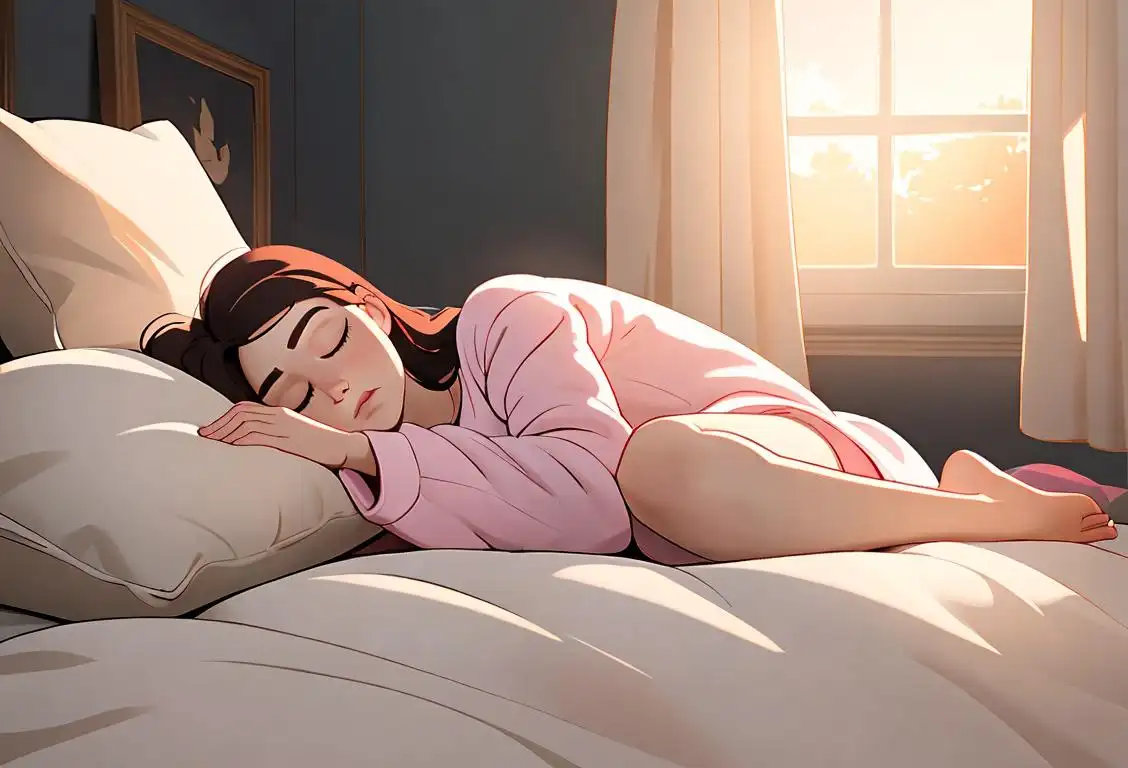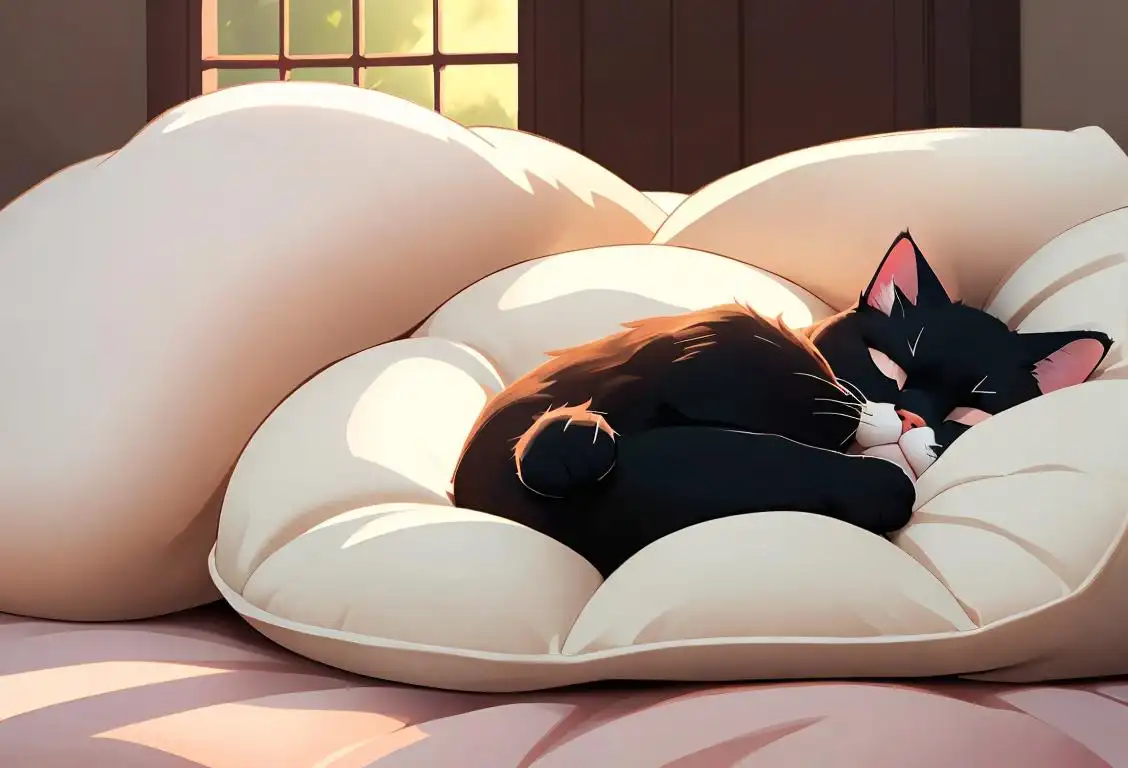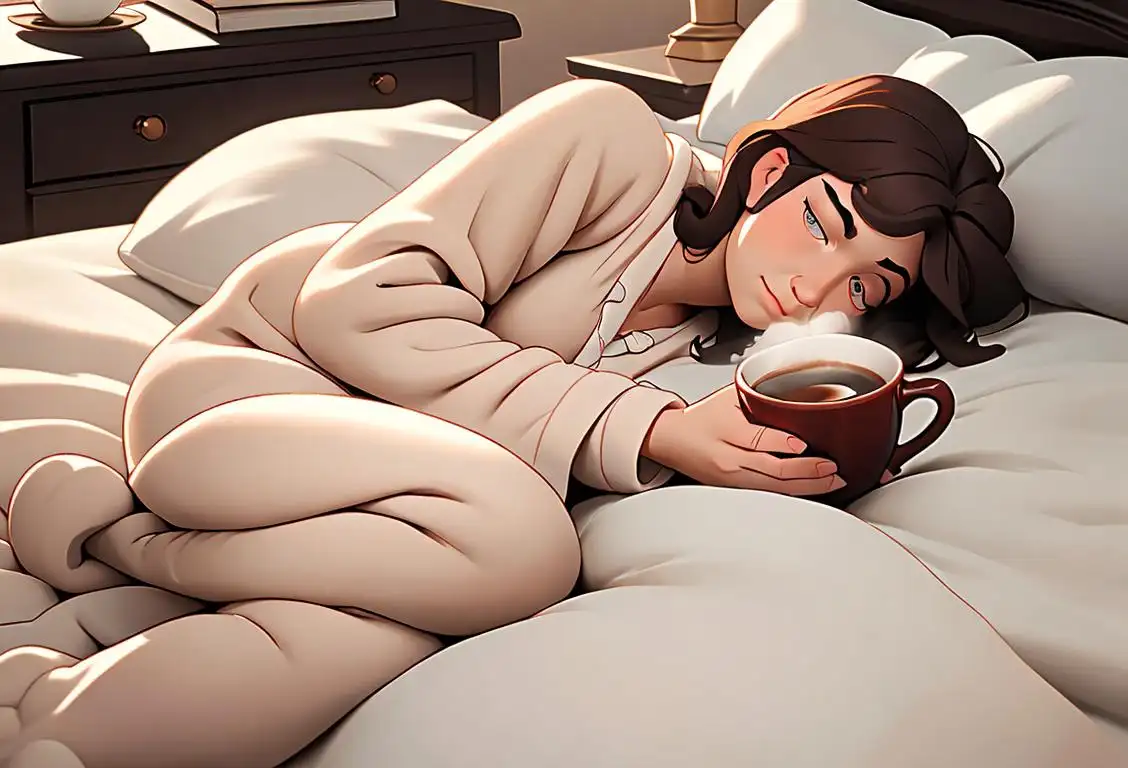National Sleep In Day

Once upon a snooze fest, we uncovered a day dedicated to every hardworking individual's dream activity - sleeping in! Yes, it's National Sleep-In Day! An occasion lovingly embraced by late-risers, hibernation enthusiasts, and the generally sleep-deprived alike.
When is Sleep In Day?
It's national sleep in day on the 30th October.
Everything you needed to know about National Sleep-In Day
This zesty little holiday took off around the internet like a warm blanket on a cold night. Our sleepy heads recorded a star-studded 3371 mentions of National Sleep-In Day, with the countdown to the snoring symphony reaching peak hype on October 30, 2016.
The Luxurious Lie-in Legends
So, where did this day to celebrate extra eyeshut come from? While the history of National Sleep-In Day is half tucked into the mysteries of the internet, the sentiment behind it is something we can relate to. After a week of hard work and early alarm clocks, who wouldn't seize the chance to turn off that annoying ringtone and spend a few more delightful moments in the arms of Morpheus?
The Sweet Sleep Sanctuary
On this blessed day, droolers and dreamers unite to honour the art of sleeping in without guilt or interruption. It's a day to disconnect the alarm, perfect your pancake sleeping position, and truly appreciate the tranquillity of tranquillity (which can only be achieved after hitting 'snooze' three or four times).
Wake up to the Joy of Sleeping In
So, here's to all the sleepyheads out there! May your dreams be sweet, your pillows fluffy, and your morning sun always hidden behind a thick set of curtains. Happy National Sleep-In Day!
History behind the term 'Sleep In'
1970
The Rise of the Counterculture
In the year 1970, the term 'sleep in' emerged as a phenomenon during the height of the counterculture movement. This movement was characterized by its opposition to established societal norms and authority. As a response to the rigidity and conformity of the time, individuals began embracing personal freedom, which included adopting alternative lifestyles, unconventional sleeping patterns, and rejecting traditional work schedules. The act of 'sleeping in' became a symbolic gesture of defiance against the rigid structures of society.
1979
The Popularity of Weekend Sleep-Ins
By 1979, the concept of 'sleeping in' had gained significant popularity, particularly on weekends. As people sought respite from their busy work lives, the weekend became a time for relaxation and indulgence. The term 'sleep in' became synonymous with the act of intentionally extending one's sleep beyond the usual waking hour, allowing individuals to recharge and rejuvenate. This cultural shift marked a desire for greater work-life balance and self-care.
1990
Sleep-Ins as a Form of Protest
In the 1990s, the term 'sleep in' took on a new dimension amidst social and political protests. Inspired by various social movements, individuals began using 'sleep-ins' as a peaceful form of demonstration. Activists would organize gatherings where participants would sleep in public spaces, such as parks or government buildings, to raise awareness for a particular cause or to demand social change. This unique and nonviolent approach to protest attracted media attention and amplified the visibility of their message.
2000
Sleep-Ins in the Digital Age
With the advent of the internet and digital technology in the early 2000s, the term 'sleep in' took on a new meaning. As remote work and flexible schedules became more common, individuals started embracing the idea of working from the comfort of their beds. This trend, often referred to as 'bed-based work' or 'digital sleep-ins,' allowed people to prioritize comfort and convenience while still fulfilling their professional obligations. This blending of work and leisure reflected the changing dynamics of the modern workforce.
Present
Embracing Self-Care and Mental Health
In the present day, the term 'sleep in' has become closely associated with the importance of self-care and mental health. As society becomes more aware of the detrimental effects of sleep deprivation and stress, 'sleeping in' is seen as a way to prioritize one's well-being. Many individuals now acknowledge the value of a good night's sleep and strive to create a balanced routine that includes enough rest. The 'sleep in' has become a symbol of self-care, reminding us to prioritize our physical and mental health in our fast-paced lives.
Did you know?
Did you know that our need for sleep is governed by two things? A homeostatic sleep drive and a circadian biological clock. Both these elements are disturbed when we don't get enough sleep. Remember this next time you hover over that snooze button!Tagged
fun nostalgia relaxation well-being sleep national sleep-in dayFirst identified
22nd September 2015Most mentioned on
30th October 2016Total mentions
3371Other days
Sleep In Day
Bathtub Day
Napping Napping Day
Me Day
Stay In Bed Day
Dre Day
Record Store Day
Comic Book Day
Drop Everything And Read Day
Cousins Day







